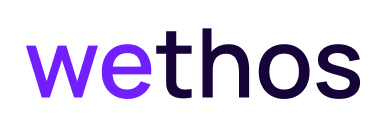Software QA Testing (Web App) Proposal Template
Pitch your next Web App QA testing project with confidence with this fully customizable scope of work template that includes project phases, detailed services, and recommended pricing, so you can get to “yes” more quickly.
Software QA Testing (Web App) Scope of Work
In the dynamic landscape of web application development, ensuring product quality, reliability, and user satisfaction is a multifaceted challenge that demands meticulous planning, technical expertise, and a systematic approach. For freelancers, QA specialists, and development teams committed to delivering excellence, the journey from initial development to final release involves crucial steps in quality assurance, including comprehensive test planning, thorough execution, and detailed reporting.
A well-defined scope of work is essential for streamlining the QA process, facilitating clear communication, meeting project milestones, and delivering a web application that meets both client expectations and user needs. Whether you're conducting functional testing, evaluating UI/UX elements, or ensuring cross-browser compatibility, starting with a detailed Software QA Testing (Web App) scope of work template can establish a solid foundation for an effective QA process, define clear project parameters, and contribute to the successful launch of high-quality web applications.
Our Software QA Testing (Web App) scope of work template outlines four key phases: Planning, Test Execution, Reporting, and Sign-off. It provides a comprehensive breakdown of essential QA activities, from creating test plans and identifying test environments to conducting various types of testing, generating reports, and finalizing documentation. This structured approach ensures thorough coverage of all critical aspects of web application quality assurance. This scope template also includes pricing recommendations based on crowdsourced pricing data from a vast network of over 100,000 freelancers.
The Software QA Testing (Web App) scope of work template is also completely customizable and editable—there are no locked PDFs or documents to download offline. Just start editing and customizing your scope of work to meet your project needs, then seamlessly send it to your client for approval and signature. It really is that easy.
Included in this scope template:
✓ Recommended overall price for the project based on crowdsourced data from over 100,000 freelancers.
✓ Detailed breakdown of 4 phases and services to include in the project.
✓ Edit and customize as needed to fit your project and client needs.
✓ Turn a scope into a proposal for client sign off in just a few clicks.
Frequently Asked Questions
-
Web APP QA Testing is the process of evaluating and verifying the functionality, usability, and performance of web applications to ensure they meet specified requirements and deliver a high-quality user experience. This includes testing various aspects such as user interface, navigation, data input/output, security, and compatibility across different browsers and devices.
Are you a freelancer, small studio, or agency looking to streamline your Web APP QA Testing process? Check out our comprehensive Software QA Testing (Web App) scope of work template to ensure you cover all essential aspects and deliver top-notch results for your clients!
-
The timeline for a Software QA Testing (Web App) project can vary depending on the complexity and size of the application. For freelancers, small studios, and agencies, a typical timeline might range from 2 to 6 weeks. This includes:
Initial planning and test strategy development: 2-3 days
Test case creation: 3-5 days
Test execution: 1-3 weeks
Bug reporting and retesting: 3-5 days
Final reporting and documentation: 2-3 days
For larger or more complex applications, the timeline may extend to 8-12 weeks or more.
-
Pricing for Software QA Testing (Web App) projects can vary based on factors such as project complexity, scope, and your experience level. For freelancers, small studios, and agencies, typical pricing models include:
Hourly rate: $50-$150 per hour
Per-project fee: $2,000-$10,000 for small to medium-sized projects
Monthly retainer: $3,000-$15,000 per month for ongoing testing services
Remember to consider your expertise, the project's specific requirements, and the value you're providing when setting your rates.
Our Software QA Testing (Web App) scope of work template includes recommended prices backed by crowdsourced pricing data we collected from over 100,000 freelancers. Our prices are are kept up to date to ensure freshness and accuracy. This insight helps ensure your pricing reflects the valuable expertise you bring to the table.
-
To create a Software QA Testing (Web App) scope of work:
Define project objectives and deliverables
Outline the testing methodology and approach
Specify the types of testing to be performed (e.g., functional, usability, performance)
List the browsers, devices, and operating systems to be tested
Include a timeline with milestones and deadlines
Detail the reporting and documentation requirements
Specify any tools or resources needed
Include terms for communication, revisions, and issue resolution
Clearly state your pricing and payment terms
Ensure the scope is comprehensive yet flexible enough to accommodate potential changes during the project.
After you’ve checked out our Software QA Testing (Web App) scope of work template, edit the phases, services, and prices however your project requires. Once all looks good, save that scope of work to your library by creating your free Wethos account. Once you’ve created a scope, you can go on and add contract terms, send proposals for client signature, create an invoice, and get paid! 🤑
-
Essential tools for Web APP QA Testing include:
Test management tools: Jira, TestRail, or qTest
Automation tools: Selenium, Cypress, or Katalon Studio
Performance testing tools: JMeter or LoadRunner
Browser compatibility tools: BrowserStack or Sauce Labs
Bug tracking tools: Bugzilla or Mantis
Security testing tools: OWASP ZAP or Acunetix
-
A comprehensive Web APP QA Testing report should include:
Executive summary
Test objectives and scope
Testing methodology and approach
Test environment details (browsers, devices, OS versions)
Test case summary and results
Detailed bug reports with steps to reproduce
Performance metrics and analysis
Usability feedback and recommendations
Security vulnerabilities (if applicable)
Risk assessment and mitigation strategies
Conclusions and recommendations for improvement
Appendices with supporting data and screenshots
Tailor the report to your client's needs and ensure it provides actionable insights for improving the web application's quality.






